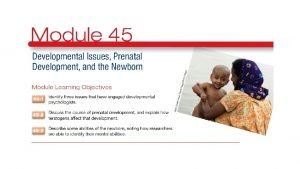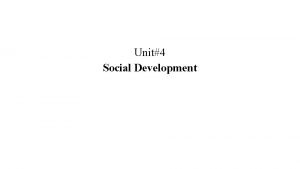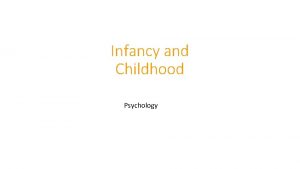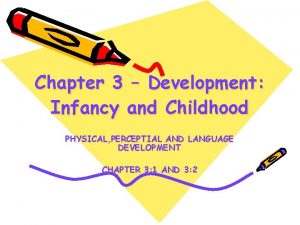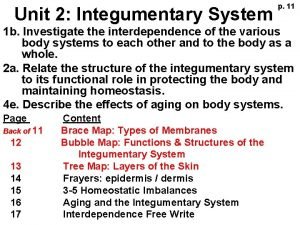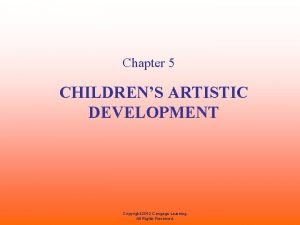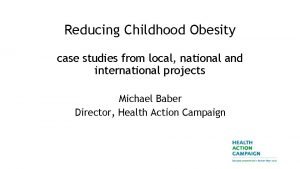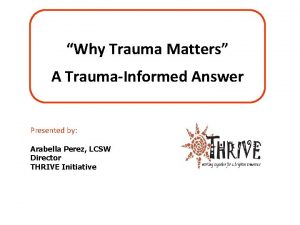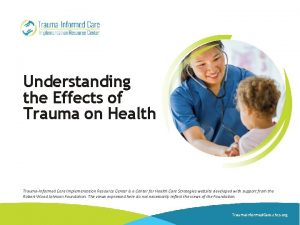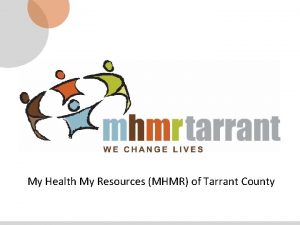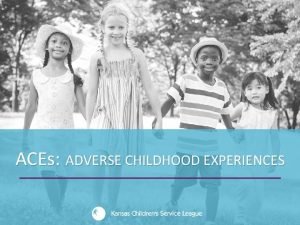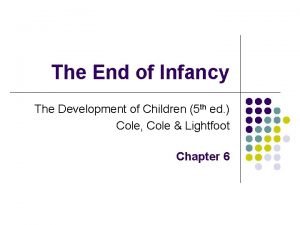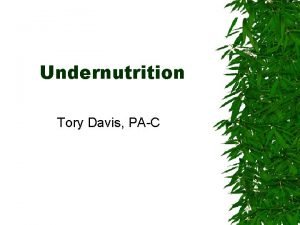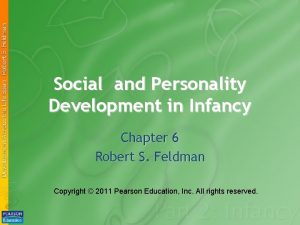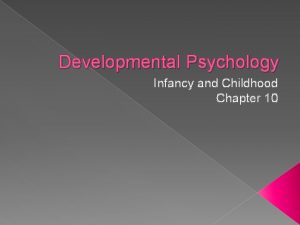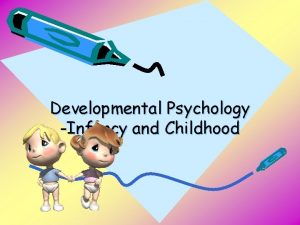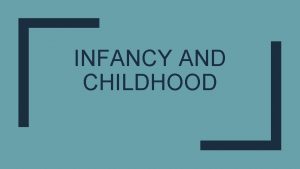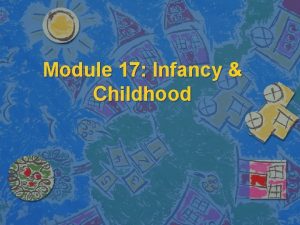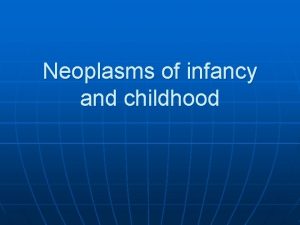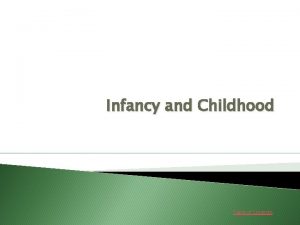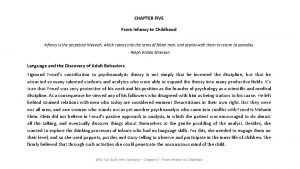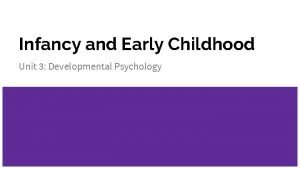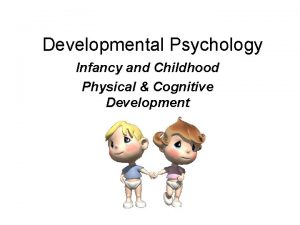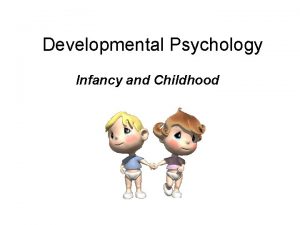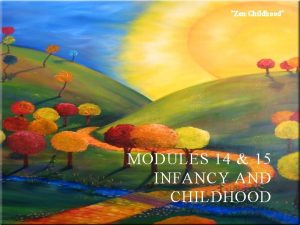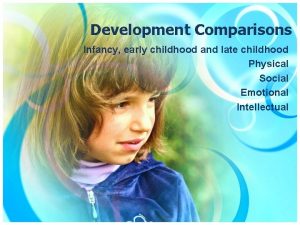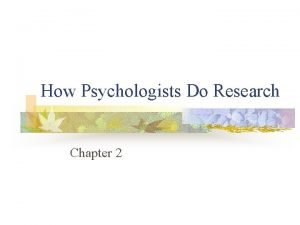Infancy Childhood Studying Children Developmental psychologists study a


























- Slides: 26

Infancy & Childhood

Studying Children • Developmental psychologists study a person’s biological, emotional, cognitive, personal, and social development from infancy through late childhood. Methods of research: • Longitudinal- same group studied repeatedly at many different points in time. • Cross-sectional-several groups of different-aged individuals studied at the same time.

Prenatal Period: Teratogens • Teratogen: agent that can harm a developing fetus, such as a disease, drug, or environmental agent. • Teratogens: • Cocaine & other drugs: causes low birth weights, poor feeding habits, greater risk for developing other psychological problems • Cocaine with other drugs: can cause behavioral problems & deficits in cognitive functioning

Prenatal Period; Teratogens • Smoking & nicotine: increases risk of low birth weight, pre-term deliveries, and possible physical problems, Sudden Infant Death Syndrome & respiratory infections • Lead: large amounts can lead to interference with brain development & deficits in IQ scores

Prenatal Period; Teratogens • Fetal alcohol syndrome: • In U. S. , leading known cause of mental retardation • Alcohol is a teratogen that crosses placenta & affects fetus • Results from a mother drinking heavily, especially during first 12 weeks of pregnancy • Results in physical changes, neurological changes, psychological & behavioral problems • Children with FAS have problems into adolescence & adulthood

Prenatal Period; Teratogens • Fetal alcohol exposure (FAE): • Results from moderate drinking (7 -14 drinks per week) by pregnant women • Less severe than FAS, but more prevalent • Results in: deficits in number of cognitive tasks & fine motor speed & coordination • Moderate drinking may result in serious problems, so researchers recommend women who are pregnant or planning a pregnancy should not drink alcohol

Child Abuse • Child abuse & neglect (physical & emotional) result from inadequate care or acts of the parent that put the child in danger, cause physical harm or injury, or involve sexual molestation. • In the U. S. , about 3 million allegations of childhood abuse & neglect annually. • About 500, 000 of allegations are for sexual abuse • Peak age of vulnerability is 7 to 13

Child Abuse cont.

Child Abuse: Sexual Abuse • Very often the abuser knows the child • Many children are too fearful of the abuser to report the maltreatment • Prevalence: survey of 21 different countries showed: • 7 - 36% women & 3 - 29% of men are sexually abused • Females are 2 -3 times more likely to suffer abuse than males

Child Abuse: Who Abuses Children? • Parents who abuse their children are likely to have low self-esteem & wide range of personal problems; may also be more impulsive, anxious, defensive, aggressive, and socially isolated • 60% of physical abuse is committed by mothers • 90% of sexual abuse is committed by fathers or stepfathers • About 30% of abused children become parents who abuse their own children, but there are compensatory factors that prevent this from happening

Child Abuse: Who Abuses Children? • A child's traits may make them more likely to be abused (for example, if they are difficult to care for) • Principle of bidirectionality: a child's behaviors influence how his/her parents respond, and in turn the parents' behaviors influence how the child responds.

What Problems Do Abused Children Have? • Children who suffer abuse may experience: • Physical injuries • Neurological injuries • Psychological & emotional problems • Problems continue in teenage years and can take form of depression, delinquent behaviors. • Can have long-lasting negative effects on a child's brain development and neural functioning

How Are Abusive Parents Helped? • Programs with combination of cognitive-behavior therapy & parent-training programs have proven successful in decreasing child abuse. These programs have two goals: • 1. Help parents overcome their personal problems • Some may need long-term professional therapy • 2. Changing parent-child interactions by using behavior modification techniques to teach parents more positive ways of interacting with their children • Current issue: Neglect, physical abuse & sexual abuse are serious social problems that deserve more attention & treatment than they currently receive.

Newborns’ Abilities • Brain growth: after birth, the genetic program regulates how the brain develops --making connections between neurons; neural connections cause baby’s brain to increase from 340 grams at birth to 900 grams at 2 years old

Newborns’ Abilities • Sensory growth: • Faces: show a preference for mother’s face; first learn to recognize a person’s eyes • By 3 to 6 months, can visually distinguish his or her mother’s face from a stranger’s or animal’s • By 3 to 4 years of age, infant’s visual abilities equal to those of an adult

Newborns’ Abilities cont. • Hearing: one-month-old infants have keen hearing and can discriminate small sound variations • By 6 months, infants can make all sounds necessary to learn the language in which they are raised Touch: have well-developed sense of touch; touch will elicit a number of reflexes Smell & taste -1 -day- old infants could discriminate between a citrus & floral odor -six-week-old infants can smell the difference between their mother & a stranger -inborn preference for sweet & salt & dislike of bitter

Newborns’ Abilities cont. • Depth perception • Developed by 6 months • Tested by visual cliff, table with uses a checkerboard pattern that creates the illusion of a clifflike drop to the floor • Environmental stimulation helps develop these abilities

Motor Development • Motor development: stages of motor skills that all infants pass through as they acquire the muscular control necessary for making coordinated movements • Follows two principles: • Proximodistal-parts closer to the center of the infant’s body develop before parts farther away • Cephalocaudal-parts of the body closer to the head develop before parts closer to the feet. • These are part of maturation

Motor Development • Developmental norms: the average at which children perform various kinds of skills or exhibit abilities or behaviors - Infants develop skills & abilities at different times because neural connections develop at different rates. - Nature & nurture interact to encourage or discourage development

Emotional Development • Emotional development: emotional behaviors, expressions, thoughts, and feelings • Temperament: relatively stable and long-lasting individuals differences in mood & emotional behavior

Emotional Development • Categories of temperament: • 1. easy: happy & cheerful, regular sleeping habits, adapt quickly to new situations • 2. Slow-to-warm-up: more withdrawn, moody & take longer to adapt to new situations • 3. difficult: fussy, fearful of new situations, more intense reactions • Genetic influence: develop distinct temperaments in first 2 -3 months of life; due to genetic factors • Environmental influence: family influence, educational opportunities, poverty level can affect

Emotional Development cont. • Jerome Kagan: conducted longitudinal research which changed the way we think about children’s temperaments. • Longitudinal: pros & cons • + must wait for participants to grow older or may drop out of study • - researchers can track & analyze development in new environmental conditions • Cross-sectional method: pros & cons: • + can compare any developmental differences across many age groups at the same time; lower drop out rate • - participants & conditions are different, allows for more error & bias in interpreting results

Emotional Development cont. • Research Kagan used longitudinal method Started studying temperaments of 4 -month-old infants Retested at different ages, until reached 20 s Findings indicated two categories: fearless or fearful/inhibited • Inhibited/fearful children show avoidance, anxiety, or fear, when in strange or novel environment; also showed increased physiological arousal & brain activity or amygdala to strange/novel situations • •

Emotional Development cont. • Study findings: -23% inhibited (fearful) -37% uninhibited (fearless) • Two groups did not differ in IQ scores, intellectual abilities, language, memory, or reasoning abilities • Having a fearful temperament at infancy puts a person at risk for becoming a fearful child, but some become less fearful (but never fearless) • Infant born with overactive amygdala at risk for having a fearful temperament & developing into a fearful or shy person • Help fearful children by being caring & supportive & help deal with stressors

Emotional Development cont. • Attachment: close, fundamental emotional bond that develops between the infant & his/her parents/caregiver. • Psychologist John Bowlby believed attachment has adaptive value--parents provide care & protection. • Mary Ainsworth initiated much of research on attachment

Emotional Development cont. Attachment Separation anxiety: infant’s distress whenever the infant’s parents temporarily leave; shows infant has become attached. Ainsworth’s research helped identify the quality of attachment; determined 4 types; Two of the types: • Secure attachment: infants who use their parents as a safe home base from which they can wander off & explore their environments • Insecure attachment: infants who avoid or show ambivalence toward their parent or caregiver -Mother’s sensitivity, caring & responsiveness to infant’s needs affects attachment -not affected by whether or how long a child was in day care -some research says: attachment formed in infancy is associated with success of future adult relationships
 Proximodistal development
Proximodistal development What three issues have engaged developmental psychologists
What three issues have engaged developmental psychologists Social development in infancy and childhood
Social development in infancy and childhood Module 47 infancy and childhood cognitive development
Module 47 infancy and childhood cognitive development Infancy and childhood psychology
Infancy and childhood psychology Internally programmed growth of a child
Internally programmed growth of a child Chapter 10 infancy and childhood
Chapter 10 infancy and childhood Chapter 10 infancy and childhood
Chapter 10 infancy and childhood Chapter 10 infancy and childhood
Chapter 10 infancy and childhood Lesson quiz 3-2 infancy and childhood
Lesson quiz 3-2 infancy and childhood Infancy childhood adolescence adulthood old age
Infancy childhood adolescence adulthood old age Rovee-collier
Rovee-collier Module 47 infancy and childhood cognitive development
Module 47 infancy and childhood cognitive development Kerlavage stages of artistic development
Kerlavage stages of artistic development Whole system approach to obesity
Whole system approach to obesity Adverse childhood experiences study
Adverse childhood experiences study Adverse childhood experiences study
Adverse childhood experiences study Adverse childhood experiences study
Adverse childhood experiences study Adverse childhood experiences study
Adverse childhood experiences study Infancy period
Infancy period Socioemotional development in infancy
Socioemotional development in infancy Infancy psychosocial development
Infancy psychosocial development Stages of development and growth
Stages of development and growth Slidetodoc
Slidetodoc Infancy
Infancy Personality development in infancy
Personality development in infancy Infancy physical changes
Infancy physical changes

